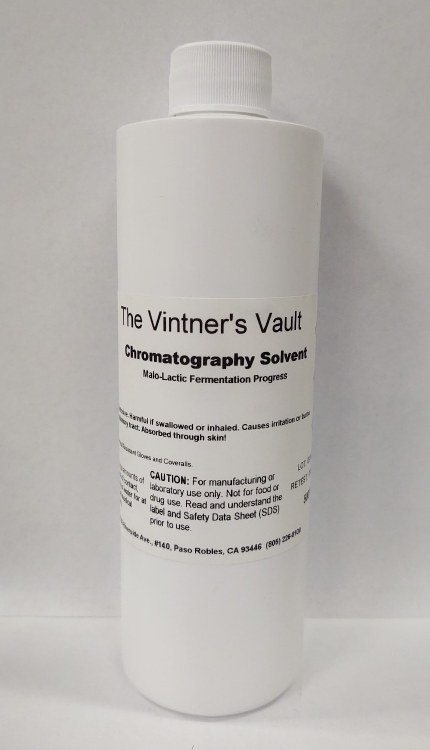Chromatography Solution 500mL
$67.99
A small concentrated spot of solution that contains the sample is applied to a strip of chromatography paper about 2 cm away from the base of the plate, usually using a capillary tube for maximum precision. This sample is absorbed onto the paper and may form interactions with it. Any substance that reacts or bonds with the paper cannot be measured using this technique. The paper is then dipped in to a suitable solvent, such as ethanol or water, taking care that the spot is above the surface of the solvent, and placed in a sealed container. The solvent moves up the paper by capillary action, which occurs as a result of the attraction of the solvent molecules to the paper,also this can be explained as differential adsorption of the solute components into the solvent. As the solvent rises through the paper it meets and dissolves the sample mixture, which will then travel down the paper with the solvent solute sample. Different compounds in the sample mixture travel at different rates due to differences in solubility in the solvent, and due to differences in their attraction to the fibers in the paper. Paper chromatography takes anywhere from several minutes to several hours.
In some cases, paper chromatography does not separate pigments completely; this occurs when two substances appear to have the same values in a particular solvent. In these cases, two-way chromatography is used to separate the multiple-pigment spots. The chromatogram is turned by ninety degrees, and placed in a different solvent in the same way as before; some spots separate in the presence of more than one pigment. As before, the value is calculated, and the two pigments are identified.
In some cases, paper chromatography does not separate pigments completely; this occurs when two substances appear to have the same values in a particular solvent. In these cases, two-way chromatography is used to separate the multiple-pigment spots. The chromatogram is turned by ninety degrees, and placed in a different solvent in the same way as before; some spots separate in the presence of more than one pigment. As before, the value is calculated, and the two pigments are identified.
 Winery
Winery Distillery
Distillery Brewery
Brewery Olive Oil
Olive Oil
Share:
Share on Facebook Share on Twitter Share on Pinterest Tell a friend